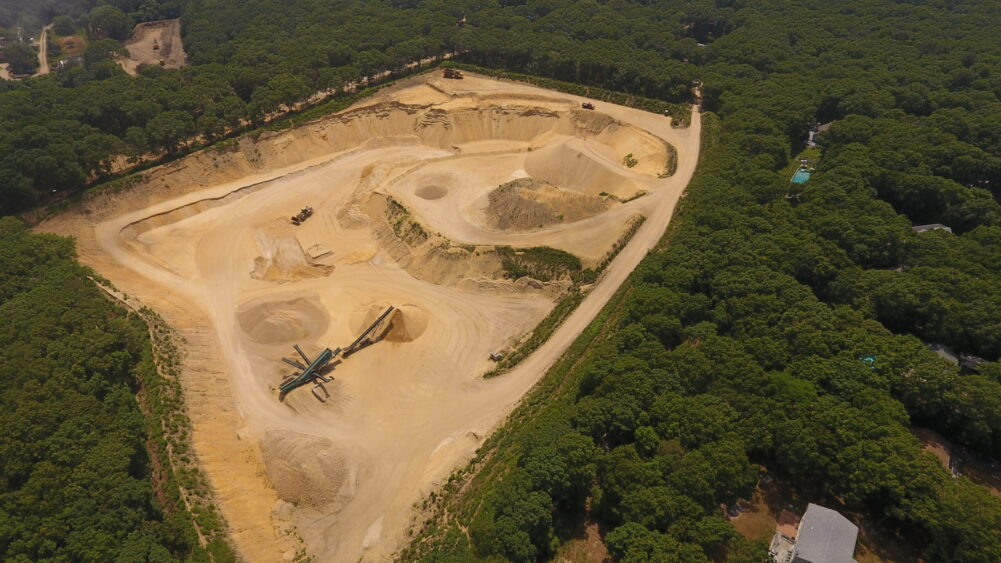
East Hampton Town’s lawsuit against New York State over the permitting of a Middle Highway sand mine, where the operators have proposed to mine sand from within the water table, has been put on a legal shelf while the state highest court considers similar issues in a separate years-long legal fight over another local sand mine.
State Supreme Court Justice Robert F. Quinlan granted a stay on May 12 of the town’s lawsuit until the State Court of Appeals issues a ruling in a lawsuit with many parallels over the Noyac sand mine known as Sand Land.
That lawsuit was filed in 2019 by Southampton Town against the State Department of Environmental Conservation after the department issued Sand Land a renewed permit allowing the mining operations to dig down an additional 40 feet. Southampton and its co-plaintiffs, the Group for the East End and three neighbors of the Noyac mine, argued that the mine should not have been allowed to expand operations, because the mine is a non-conforming use under town zoning codes.
A year later, the DEC renewed a permit originally issued in the 1980s for the Middle Highway mine in East Hampton, which is operated by Sand Highway LLC, a subsidiary of Patrick Bistrian Jr. Inc. The permit renewal expanded the allowable scope of mining at the 14-acre site to an additional 110 feet of depth — allowing sand to be mined from below the water table, creating a 6-acre, 100-foot-deep lake of exposed groundwater.
Like Southampton, East Hampton Town sued the DEC, claiming the permits violated state statutes that defer to local zoning when it comes to mines in towns on Long Island that draw their water from sole-source aquifers.
In May 2021 a state appellate court panel ruled in favor of Southampton Town, finding that the town’s zoning superseded the state DEC’s otherwise broad discretion when it came to permitting the essential mining industry.
A month later, however, the judge who had been hearing the East Hampton Case over Sand Highway, Justice Andrew A. Crecca, issued a ruling that said the DEC’s permits renewal did not constitute an expansion of the mine and could not be constrained by the town. In an odd twist, Crecca pre-dated his decision by more than five weeks, so that it appeared to have been made before the higher court’s ruling.
The town quickly filed a motion to be allowed to re-argue the case, in light of the appellate division’s stance, to a different judge. In September the new judge, Justice William G. Ford, issued a restraining order blocking the mine from expanding operations beyond the original parameters for the Sand Highway mine.
In the meantime, Attorney General Letitia James’s office announced it would not pursue further legal appeals of the Sand Land case. But attorneys for the mine’s owner, Wainscott Sand & Gravel owner John Tintle, did file a request to argue their case to the state’s highest court, and in March the Court of Appeals agreed to hear the case — a legal victory in its own right, since the court accepts fewer than 5 percent of the cases brought to it.
The case is seen as being likely to produce a potential precedent-setting ruling on the extent of the power of local municipalities to impose limits on decades old — and essential — businesses that predate local codes banning them.
Quinlan noted in his stay of the town’s appeal to re-argue, that the Court of Appeals hearing the Sand Land matter would settle the seminal questions of the East Hampton suit and in a timely manner.
“Here it is clear that the interpretation of Environmental Conservation Law will establish binding precedent for the determination of this hybrid proceeding,” Quinlan wrote.
East Hampton Town Supervisor Peter Van Scoyoc said this week that he was not aware the case had been stayed to await the Court of Appeals findings.